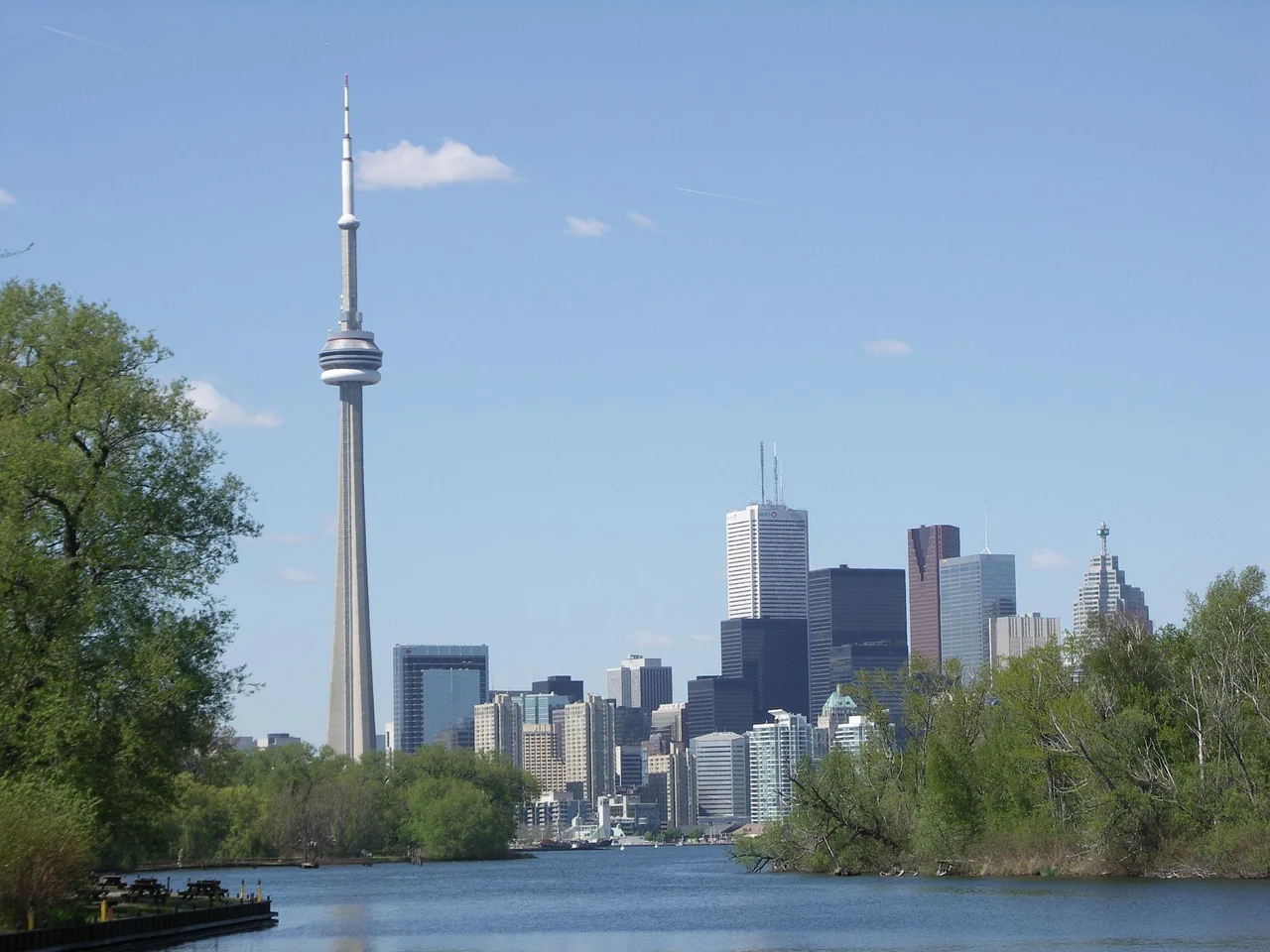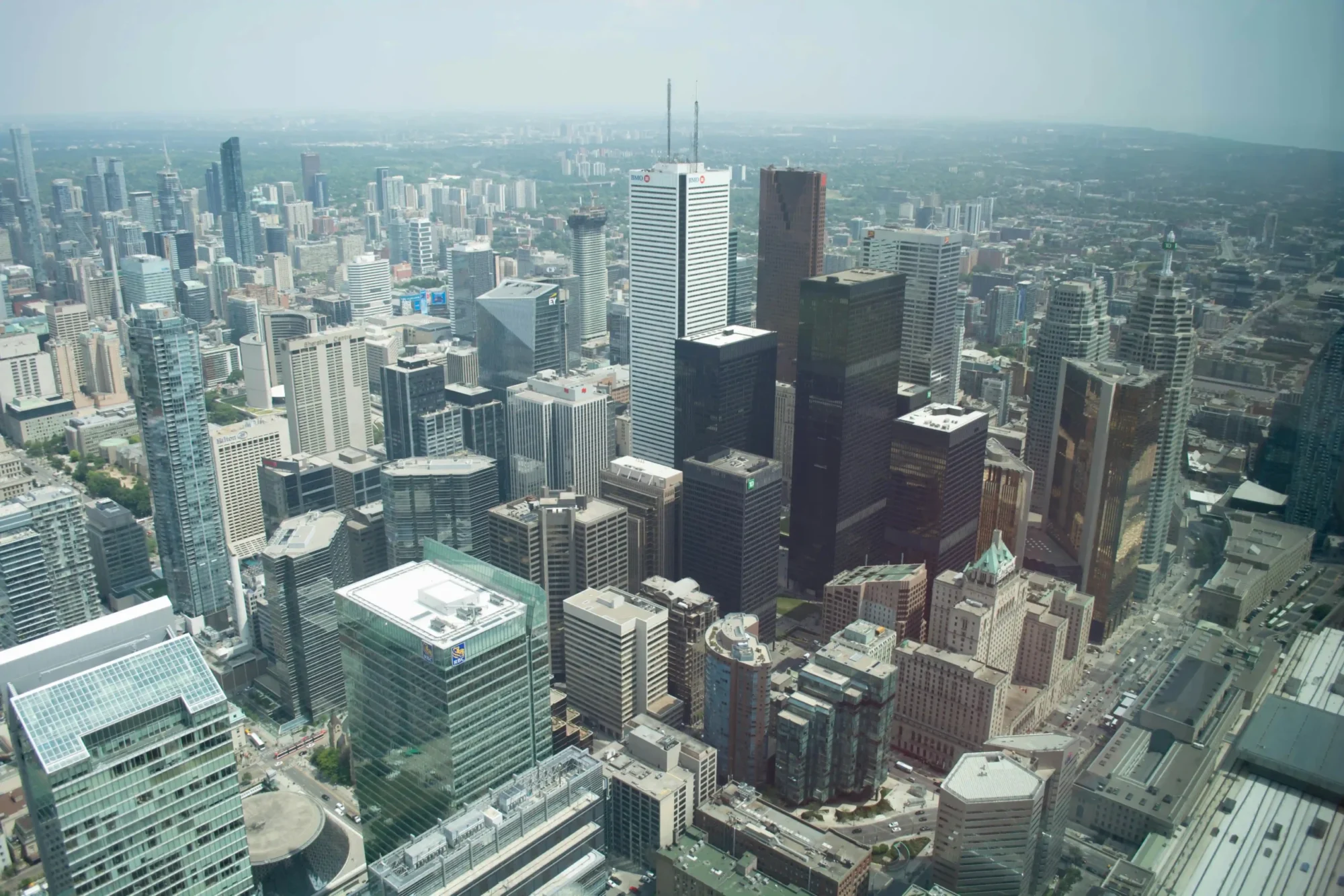Standing tall at 298.1 meters (978 feet), First Canadian Place has been a defining feature of Toronto’s skyline for half a century. Completed in 1975, this iconic skyscraper has long symbolized Canada’s economic ambitions and architectural confidence — and for decades, it held some impressive records on both national and global stages.
With its commanding height and stark white profile, First Canadian Place wasn’t just another tall building when it opened — it was a bold statement that Toronto had arrived as a global financial powerhouse.
A Bold Statement in the 1970s
When First Canadian Place opened its doors, it instantly became the tallest building ever constructed in Canada — a title it would remarkably hold for 50 years. But its significance stretched well beyond the national stage.
At the time of its completion, the tower was:
- The 8th-tallest building in the world
- The tallest building outside of New York and Chicago
- The tallest in the entire Commonwealth
This achievement was no small feat. During the 1970s, skyscraper construction was concentrated in the United States, particularly in Chicago and New York, which were then considered the twin capitals of high-rise innovation. That First Canadian Place rose so prominently in Toronto signaled a dramatic shift in where architectural ambition was heading.
Only seven buildings stood taller at the time: the Sears Tower (now Willis Tower), World Trade Center Towers 1 and 2, the Empire State Building, the Aon Center, the John Hancock Center, and the Chrysler Building. These were icons of American architectural prowess — and First Canadian Place was now part of that elite global skyline conversation.
Interestingly, First Canadian Place achieved its height without the help of an antenna or spire — its roofline represents its true architectural height, making it all the more impressive in direct comparisons.
Designed for Presence and Power
The building was designed by Bregman + Hamann Architects in association with Edward Durell Stone, the latter best known for his clean and monumental work in the international style. Their collaborative design for First Canadian Place reflected both aesthetic restraint and commanding presence.
The original cladding was Italian white Carrara marble, giving the building its signature bright appearance and helping it stand out against the darker tones of the surrounding skyline. Unfortunately, due to decades of weathering and cracking, the marble was eventually replaced between 2010 and 2012 with a more durable combination of white glass and granite — visually similar but built to last in Canada’s harsh climate.
The tower has 72 floors, 29 elevators, and over 2.7 million square feet of space, making it one of the largest office towers in North America by floor area. It houses the Bank of Montreal’s national headquarters and remains a centerpiece of Toronto’s Financial District.


A Landmark Through the Decades
From the moment it opened, First Canadian Place towered over the country. No other building in Canada came close to challenging its height for five full decades, despite construction booms in cities like Vancouver, Calgary, and later even within Toronto itself.
Throughout those years, it became more than just a tall building — it became a symbol of stability, consistency, and Canadian ambition. Its white, geometric form served as a constant in a cityscape that was always evolving. Business leaders and architectural critics alike pointed to it as a sign of Toronto’s maturity as a global city.
It wasn’t until late June 2025 — nearly 50 years to the month since its completion — that its reign quietly came to an end. That’s when 1 Bloor West, also known as “The One,” officially surpassed it in height, ushering in a new era for Canadian skyscrapers.
Even with that change, the respect and recognition for First Canadian Place remain firmly intact.
Where It Stands Today
As of July 2025, First Canadian Place holds the following positions:
- 2nd tallest building in Canada
- 249th tallest building in the world (by architectural height)
Its global rank has naturally dropped over the years as cities like Dubai, Shenzhen, and Guangzhou have raced to build increasingly taller towers. But in the 1970s, 80s, and even 90s, First Canadian Place was among the world’s most dominant skyscrapers — not only by height, but by its role in defining the skyline of a major city.
It’s worth noting that even as taller buildings have emerged, few have matched the tower’s influence or its symbolic importance to Canadian architecture.
More Than Just Height
While its height is a defining characteristic, First Canadian Place’s cultural and architectural impact goes much deeper. It’s a building that has:
- Defined the city’s skyline for half a century
- Served as a headquarters for major financial institutions
- Anchored the bustling PATH network — North America’s largest underground shopping complex
- Been part of Toronto’s transformation from regional center to global city
The tower is also a key player in shaping pedestrian life in the Financial District. With direct access to the PATH system, Union Station, and neighboring office complexes, it acts as both a vertical and horizontal connector for thousands of daily commuters.
Final Thoughts
Even though it’s no longer the tallest in Canada, First Canadian Place remains a monument to an era when Toronto first looked skyward and staked its place on the global stage. Its clean form, powerful height, and lasting presence make it one of the most important skyscrapers in Canadian history — and an enduring icon of ambition.
Its legacy isn’t just in the records it once held, but in the identity it gave to Toronto’s skyline — and in how it continues to represent the city’s economic and architectural strength.

